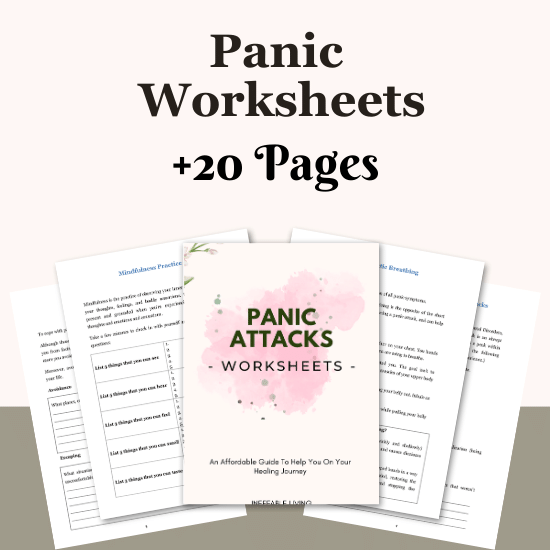This post contains “Do I Have Driving Anxiety Quiz” along with helpful tips to overcome driving anxiety.
Do I Have Driving Anxiety Quiz
Results
#1. Do you experience excessive worry or fear leading up to or during driving situations?
#2. Have you noticed physical symptoms such as rapid heartbeat, sweating, or trembling when you think about or engage in driving?
#3. Do you tend to avoid driving or specific routes, particularly those involving highways, bridges, or heavy traffic?
#4. Have you experienced a panic attack or intense anxiety while driving?
#5. Do you find yourself overly dependent on a passenger for reassurance or support while driving?
#6. Are you constantly scanning for potential dangers or feeling on edge while behind the wheel?
#7. Have your driving-related fears and anxieties significantly impacted your personal or professional life?
We will not sell your information. All results are kept confidential.
This quiz is for informational purposes only. It is not meant as a diagnostic or assessment tool.
Results
The questions above represent common signs of driving anxiety. If you find yourself responding affirmatively to many of these questions, it could indicate that you are experiencing driving anxiety.
Related: Best 5 Driving Anxiety Books
What Causes Driving Anxiety?
Driving anxiety can stem from various factors, and understanding the underlying causes can be crucial in addressing and managing this type of anxiety. Here are some common contributors to driving anxiety:
1. Traumatic Experiences: A significant cause of driving anxiety can be past traumatic experiences on the road, such as car accidents, near-misses, or witnessing accidents firsthand. These events can lead to the development of a fear response associated with driving or being a passenger in a vehicle.
2. Conditioning and Learning: Individuals may develop driving anxiety through classical conditioning, where negative experiences or associations become linked to driving. For example, if someone experiences a panic attack while driving or is involved in a frightening driving-related incident, they may develop an automatic fear response to driving in the future.
3. Generalized Anxiety: Individuals with pre-existing generalized anxiety disorder or related anxiety conditions may also experience driving anxiety as a specific manifestation of their broader anxiety symptoms. This can involve excessive worry, anticipatory anxiety, and physical discomfort related to driving situations.
4. Specific Triggers: Driving anxiety can be triggered by specific situations or elements of driving, such as highway driving, navigating through busy intersections, merging lanes, or driving in adverse weather conditions. These triggers can elicit feelings of panic, dread, or avoidance behavior.
5. Fear of Losing Control: The act of driving inherently involves a sense of control and responsibility. For some individuals, the fear of losing control, making a mistake, or being unable to handle unexpected situations while driving can contribute to anxiety.
6. Fear of Accidents or Harm: Concerns about the potential for accidents, injuries, or harm while driving, whether to oneself or others, can fuel driving-related anxiety. Catastrophic thinking about worst-case scenarios may intensify these fears.
7. Negative Beliefs and Thoughts: Negative beliefs and cognitive distortions related to driving, such as catastrophizing (“I’ll definitely get into an accident”), overgeneralizing (“I’m a terrible driver”), or mind-reading (“Other drivers think I’m incompetent”), can influence and perpetuate driving anxiety.
Related: How to Stop “What If” Anxiety Thinking?
8. Social Anxiety and Pressure: For some individuals, driving anxiety may be linked to social anxiety or performance anxiety, particularly in situations where others are present or when the driving task is perceived as being evaluated or judged.
9. Sensory Overload: The sensory stimuli associated with driving, including visual, auditory, and tactile input, can be overwhelming for some individuals, contributing to heightened anxiety and discomfort while driving.
10. Underlying Phobias: Driving anxiety can intersect with specific phobias, such as agoraphobia (fear of being in open or unfamiliar spaces), claustrophobia (fear of confined spaces), or aichmophobia (fear of sharp objects), which can exacerbate anxiety related to driving environments.
It’s important to recognize that driving anxiety is a complex and multifaceted phenomenon, and multiple factors may interact to produce and maintain this type of anxiety.
Understanding the specific triggers and underlying mechanisms contributing to an individual’s driving anxiety is crucial for developing targeted interventions and coping strategies.
Related: Future Tripping: Top 9 Ways to Avoid Future-Tripping
How to Overcome Driving Anxiety?
Overcoming driving anxiety can be a challenging and gradual process, but with the right strategies, it is possible to regain confidence and ease behind the wheel.
Here are some evidence-based techniques and tips that can help you work through your driving anxiety:
1. Understand the Root of Your Anxiety:
It’s essential to reflect on the underlying reasons for your driving anxiety.
Have there been past traumatic experiences, such as accidents or near-misses, that have contributed to your fear?
Are there specific triggers, such as highway driving or navigating through busy intersections, that prompt anxiety?
By identifying the root causes of your driving anxiety, you can begin to address them more effectively.
2. Gradual Exposure:
Gradual exposure to driving situations can help desensitize your fear response.
Start by practicing driving in less anxiety-provoking environments, such as quiet residential streets or parking lots.
As you become more comfortable, gradually progress to more challenging scenarios.
This approach, known as systematic desensitization, allows you to confront your fears at a pace that feels manageable.
Related: Journal Prompts For Anxiety (+FREE Anxiety Worksheets)
3. Relaxation Techniques:
Learning and practicing relaxation techniques can be beneficial in managing driving anxiety.
Deep breathing, progressive muscle relaxation, and visualization exercises can help calm your mind and body, reducing the physical symptoms of anxiety while driving.
4. Cognitive Restructuring:
Cognitive restructuring involves challenging and reframing irrational thoughts and beliefs about driving.
Identify and challenge negative thought patterns related to driving, such as catastrophic thinking (“I’ll definitely get into an accident”) or overestimating danger (“All other drivers are reckless”).
Replace these thoughts with more realistic and balanced perspectives, based on evidence and logic.
5. Safety Education and Skill-Building:
Enhancing your knowledge and skills related to safe driving practices can boost your confidence.
Consider enrolling in defensive driving courses or seeking additional driving instruction to refine your abilities and knowledge of road safety.
Related: Impulsive vs Intrusive Thoughts (& How to Manage Them)
6. Establish a Support System:
Having a supportive network of family and friends can provide encouragement and understanding as you work through your driving anxiety.
Additionally, discussing your concerns with loved ones can help alleviate feelings of isolation and shame associated with anxiety.
7. Set Realistic Goals:
Setting achievable and incremental goals for yourself, such as driving short distances or during off-peak hours, can foster a sense of accomplishment and build momentum toward overcoming your driving anxiety.

FAQs
Is it normal to feel anxious while driving?
Yes — it’s more common than people think. Many individuals feel some level of nervousness while driving, especially in unfamiliar areas or during challenging conditions (like heavy traffic or bad weather). The difference is whether that anxiety is occasional or starts to interfere with daily life.
How can I tell if it’s driving anxiety or something else?
If your anxiety mainly surfaces while driving and eases once you’re out of the car, it’s likely situational driving anxiety. If you also experience anxiety in many other settings, it may be part of generalized anxiety disorder or panic disorder. A therapist can help clarify this.
Should I avoid driving altogether?
Avoidance might offer short-term relief, but in the long term, it can strengthen the anxiety. The more you avoid, the more you teach your brain that driving is dangerous — even when it’s not. Gradual, supported exposure is often more effective for lasting progress.
Will I ever feel comfortable driving again?
Yes — with patience, support, and consistent practice, most people with driving anxiety regain confidence behind the wheel. It may not happen overnight, but many go on to drive comfortably again, even in situations that once felt impossible.
Conclusion
It’s important to approach the process of overcoming driving anxiety with patience and self-compassion.
Progress may occur gradually, and setbacks are normal.







